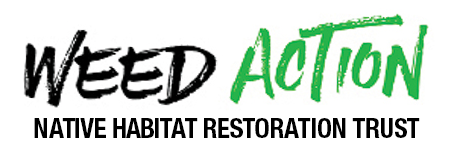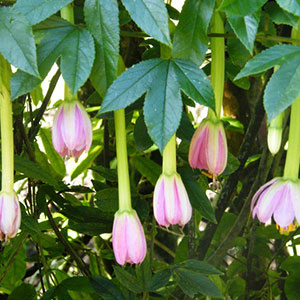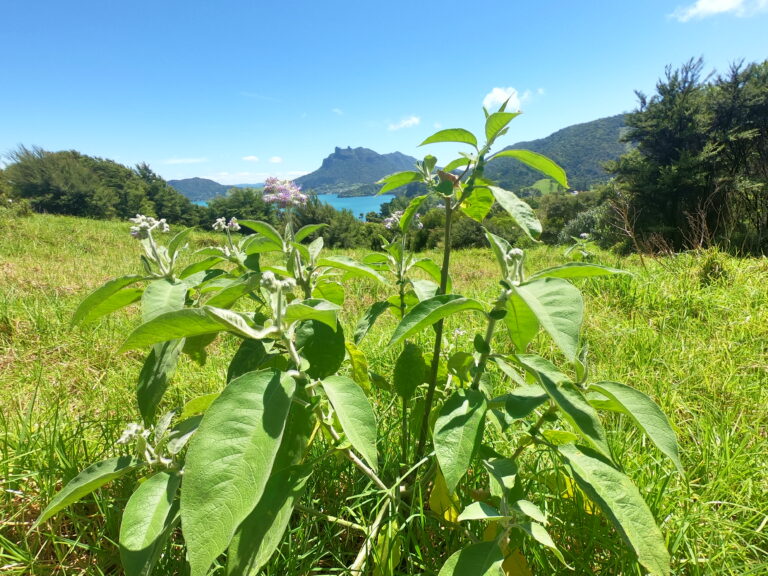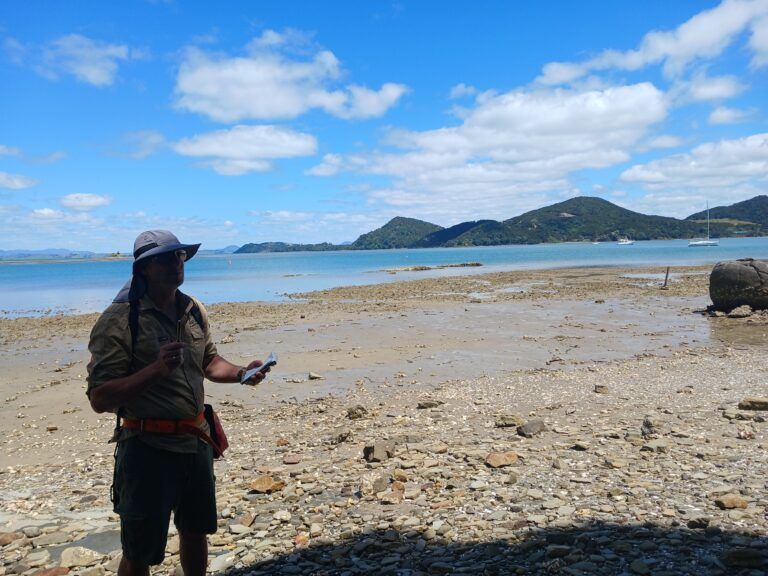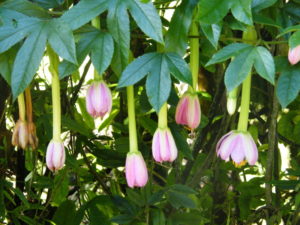 Passiflora tripartita all sub-species and P. tarminiama
Passiflora tripartita all sub-species and P. tarminiama
Just want to know how to kill it?
Skip to control methods
Also known as
Banana passion flower, wild blue-crown, wild passion vine. Both species virtually identical in appearance and characteristics.
What does it look like?
A climbing vine that can climb up to 10m. Hanging pink flowers (7 cm diameter) with central tube (60-95 mm long), produced year round, followed by hanging, thin-skinned fruit (7- 12 x 2-4 cm) ripening from green to yellow or orange, with sweet edible orange pulp and dark red seeds (4-6 mm long).
Leaves glossy green, 3-lobed (each lobe 5-14 cm long, middle lobe the longest), edges serrated, and undersides covered in down/hairs, and at least some hairs above. Densely hairy stems which are angular when young, and which have many spiralling tendrils.
Why is it a problem?
It is an aggressive vine that invades shrubland, open forest and light wells margins of intact bush where it smothers trees, reduces biodiversity and allows other weeds to invade. Grows rapidly in most soil types, and produces highly viable seed in 2 years. Partly tolerant to shade, damage and drought, and stems root where they touch the ground.
How much of it do we have on the Whangarei Heads Peninsula?
Relatively little. There are isolated adult plants growing in people’s gardens and on the roadside and these are the source of escapees that are starting to invade bush areas. We are still at the early stages of spread where early control can make a huge difference.
How does it spread?
Seed and stem fragments. The large sweet fruits are attractive to birds, feral pigs, possums and rats, which carry seeds some distance. Humans collecting, eating and discarding fruits also contributes to the spread. It often grows and spreads along roadsides and disturbed areas.
What can we DO about it?
Good news – we can get rid of all of it! Because there is relatively little, and it is easy to kill, if we remove it from all of its known locations we can effectively eradicate it from Whangarei Heads. Because it is bird dispersed we can keep it out by removing any new invaders from further up the peninsula.
Get rid of it from your own garden and spread the word to your neighbours and friends. If you have it/see it, get in touch and Weed Action volunteers will help remove it.
Check out the control methods below:
How do I control it?
Special note: Roots normally easy to pull out. Use herbicide only when roots cannot be pulled.
- Pull roots up. Tie/hang stems in air to prevent layering.
- Cut stump application: Cut and immediately treat stumps with (1g metsulfuron/1L water), or (100ml Tordon Brushkiller®/1L water), or (200ml glyphosate/1L water), or (100ml triclopyr/1L water), or (200ml Banvine®/1L water).
- Spray large masses on ground where roots cannot be pulled with (120ml Banvine® + 10mls penetrant/10Lwater) or (30ml triclopyr + 10ml penetrant/10L water), or (100ml glyphosate + 20ml penetrant/10L water). Best in spring-autumn.
CAUTION: when using any herbicide or pesticide PLEASE READ THE LABEL THOROUGHLY to ensure that all instructions and safety requirements are followed.
Click here for more information on the herbicides referenced in the control methods, or here for more information on the suggested techniques.
Photos of banana passionfruit
Save
Save
